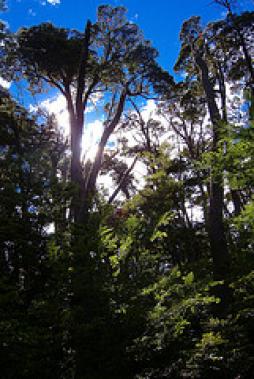Mobile phones are nothing new for Greenpeace Argentina. The organization has used mobile phones multiple times to mobilize its now 350,000 person-strong mobile list to successfully lobby for important environmental legislation. One of Greenpeace's significant accomplishments was the passage of the Ley de Bosques, or Forest Law.
According to a recently UN/Vodaphone report, Wireless Technology for Social Change: Trends in NGO Mobile Use, before the law was passed forests in Argentina were being quickly destroyed. From the report:
Every hour, trees covering an area the size of forty soccer fields are cleared from the old growth forests of Argentina, home to indigenous tribes and numerous endangered species. According to Greenpeace, 300,000 hectares (3,000 square kilometers or 1,150 square miles) of native forest are cleared in Argentina each year. To confront this rapid deforestation, Greenpeace Argentina used the web, mobile phones, and publicity on television and in newspapers to gather 1.5 million signatures for a petition supporting La Ley de Bosques, or the Forest Law.
Using mobile phones, Greenpeace was able to rally supporters and effectively pass Argentina's first federal forest protection law.
Greenpeace was able to effectively advocate for the Ley de Bosques by building a large database of supporters. Through a form on the organization’s website, individuals were asked to sign a petition supporting the Forest Law, and submit both email addresses and mobile phone numbers. About 300,000 phone numbers were collected from this web form, and an additional 50,000 were collected via other means, such as email or through volunteers stationed on busy streets. This 350,000-number mobile phone list is one of the larger active mobile phone lists used in advocacy today. By the end of the campaign, over 1.5 million people had signed the petition supporting the Forest Law. Greenpeace used their mobile phone network in several ways. The organization collected about 3,000 signatures for the petition via text messaging. Greenpeace also sent out text messages asking people to call specific legislators to lobby for the law. Text messages were sent out to specific target audiences, so that people would be directed to their legislator. Finally, Greenpeace used the mobile network to send urgent alerts about other actions or news.
The Greenpeace story is one of the case studies in the recent report Wireless Technology for Social Change: Trends in NGO Mobile Use, released this past Tuesday by the United Nations Foundation and The Vodafone Group Foundation. Katrin Verclas of MobileActive and Shelia Kinkade of ShareIdeas co-authored the report. The Greenpeace case study is one of 11 case studies of groups active in the areas of public health, humanitarian assistance and environmental conservation that use mobile phones in their work.

Post new comment